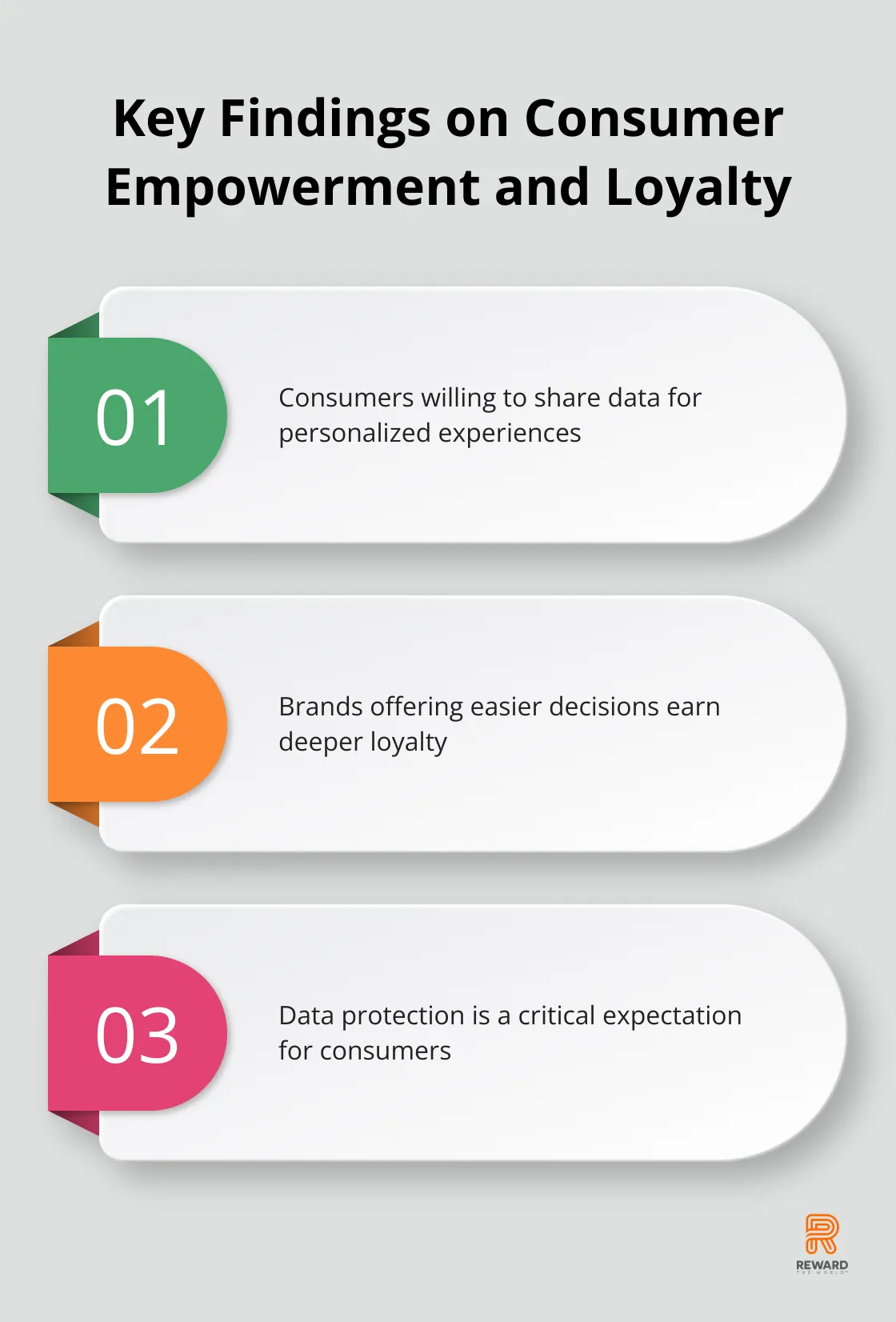
AI-driven loyalty programs are revolutionizing customer engagement, but they come with a critical responsibility: fairness. At Reward the World, we’ve seen firsthand how these programs can boost retention and sales when implemented ethically.
However, without proper safeguards, AI systems can perpetuate biases and erode trust. This post explores the challenges and solutions in AI ethics for loyalty programs, helping businesses create fair and effective rewards systems.
Why Fair AI Matters in Loyalty Programs
Defining Fairness in AI-Driven Rewards
Fairness in AI-driven loyalty programs means equal treatment for all customers, regardless of demographics or spending patterns. This doesn’t translate to identical rewards for everyone, but rather a system that avoids unfair advantages or disadvantages for any specific group. At Reward the World, we understand the importance of this balance in creating effective and ethical reward systems.
The Trust Factor: A Make-or-Break Element
Unfair practices in AI-driven loyalty programs can shatter customer trust, leading to severe consequences. This underscores the critical need for fairness in AI-driven loyalty initiatives.

Brand Reputation: A Fragile Asset
A company’s reputation takes years to build but can crumble in an instant. Unfair AI practices in loyalty programs often lead to public backlash and negative press. Such incidents highlight the importance of fair AI implementation in maintaining brand integrity.
Navigating the Legal Landscape
The legal implications of unfair AI practices in loyalty programs continue to grow in significance. Regulations like the European Union’s GDPR mandate fair and transparent data processing. Companies must prioritize compliance to avoid severe penalties.
Ethical Considerations Beyond Compliance
While legal compliance is essential, ethical considerations should extend beyond mere box-ticking. This emphasizes the need for companies to embrace the spirit of fairness in all aspects of their AI-driven loyalty programs, not just follow the letter of the law.
As we move forward, it’s clear that fairness in AI-driven loyalty programs is not just a moral imperative but a business necessity. The next section will explore common fairness issues that arise in these programs and how to address them effectively.
Key Fairness Challenges in AI Loyalty Programs
AI-driven loyalty programs face several critical fairness challenges that can undermine their effectiveness and erode customer trust. These issues demand careful consideration and proactive measures to ensure equitable treatment for all participants.
Algorithmic Bias: The Hidden Threat
Algorithmic bias poses a significant issue in AI systems, including those powering loyalty programs. This bias can lead to unfair treatment of certain customer groups based on factors like gender, race, religion, or age. In loyalty programs, this could manifest as offering better rewards to certain demographics or excluding others from promotional opportunities.
Companies must regularly audit their AI algorithms for bias. This involves testing the system with diverse datasets and analyzing outcomes across different customer segments. Additionally, involving diverse teams in AI development can help identify and mitigate potential biases early in the process.
Data Privacy: The Personalization vs. Protection Dilemma
AI-driven loyalty programs thrive on data, but they must navigate the fine line between personalization and privacy invasion. A survey by Accenture revealed that consumers who empower brands with easier decisions will earn deeper loyalty, leaving competitors behind. However, this willingness comes with expectations of robust data protection.
Companies must implement stringent data protection measures and be transparent about data usage. This includes obtaining explicit consent for data collection, providing clear opt-out options, and regularly updating privacy policies. Transparency in data practices sets a standard for the industry and builds trust with customers.

Reward Allocation Transparency: Building Trust
Lack of transparency in how AI allocates rewards can breed mistrust among program participants. When customers don’t understand how their actions translate into rewards, they may perceive the system as unfair or manipulative. Scientific research indicates that loyalty programs don’t automatically shield customers from price sensitivity during inflationary periods.
To address this, companies should provide clear, accessible explanations of how their AI systems determine rewards. This could include simplified flowcharts, real-time reward tracking, and detailed FAQs. Some forward-thinking brands even consider blockchain technology to create immutable, transparent records of reward transactions.
Fairness in Customer Segmentation
AI-driven loyalty programs often segment customers based on their behavior and value to the company. While this can lead to more personalized experiences, it also raises questions about fairness. High-value customers might receive preferential treatment, potentially alienating other segments of the customer base.
Companies must strike a balance between personalization and equal opportunity. This might involve offering tiered rewards systems that provide value at all levels or implementing “surprise and delight” elements that give all customers a chance at premium rewards.
Addressing Accessibility Issues
AI loyalty programs that rely heavily on technology (e.g., mobile apps or online platforms) may inadvertently exclude certain customer groups, such as older adults or those with limited access to technology. This digital divide can create unfair advantages for tech-savvy customers.
To combat this, companies should offer multiple ways to participate in loyalty programs, including non-digital options. They should also ensure that their digital interfaces are user-friendly and accessible to people with disabilities.
These fairness challenges require ongoing attention and proactive solutions. In the next section, we’ll explore strategies for implementing fair AI-driven loyalty programs that address these concerns head-on.
How to Implement Fair AI-Driven Loyalty Programs
Conduct Regular AI Audits
Conduct regular audits to verify that rewards and promotions are distributed equitably among all customer segments. This practice helps maintain fairness and ensures that your AI-driven loyalty program remains unbiased. These audits should involve cross-functional teams, including data scientists, ethicists, and customer service representatives.
During these audits, run your AI through various scenarios using diverse datasets. Look for any patterns of bias, such as consistently lower rewards for certain demographics. Tools like IBM’s AI Fairness 360 toolkit can help identify and mitigate unfair bias in machine learning models.
Prioritize Data Diversity
The quality of AI output depends on the input data. Ensure that training datasets used for AI development are diverse, representative, and inclusive of various demographic groups.
Consider partnerships with diversity-focused organizations to expand your data collection. The National Diversity Council offers resources for businesses looking to improve their data inclusivity.

Communicate Clearly and Often
Transparency builds trust. Explain how your AI works in simple terms. Create a dedicated page on your website that outlines how rewards are calculated and what factors the AI considers.
Go beyond explanations-show your customers. Implement features that allow users to see a breakdown of how they earned each reward. This level of transparency not only builds trust but can also motivate customers to engage more with your program.
Implement Human Oversight
While AI is powerful, human judgment remains irreplaceable. You must establish a human review process for AI decisions, especially for high-stakes rewards or when customers raise concerns.
Create an easily accessible appeals process for customers who feel they’ve been treated unfairly. Make sure trained staff handle this process. They should explain decisions and make adjustments when necessary.
Monitor and Adapt
The field of AI evolves rapidly. Your fairness strategies must evolve too. Set up a system to monitor the latest developments in AI ethics and fairness. Try to incorporate new best practices as they emerge.
Regularly collect feedback from your customers about their experience with your AI-driven loyalty program. Use this feedback (along with your audit results) to make continuous improvements to your system.
Final Thoughts
Fairness in AI-driven loyalty programs builds trust and forms the foundation of long-lasting customer relationships. The future of AI ethics in customer loyalty looks promising, with advanced tools for bias detection and enhanced data protection measures on the horizon. These developments will enable businesses to create personalized loyalty experiences while maintaining high standards of fairness.
Companies must act now to prioritize fairness in their loyalty initiatives. This includes regular audits, diverse data sets, human oversight, and open communication with customers. Reward the World helps businesses implement fair and effective AI-driven loyalty programs through robust analytics and seamless integration.
The future of customer loyalty depends on ethical AI implementation. Companies that embrace this approach will thrive in the coming years (and gain a competitive edge). Businesses can build stronger customer relationships, enhance brand reputation, and drive long-term success through fair AI-driven loyalty programs.
